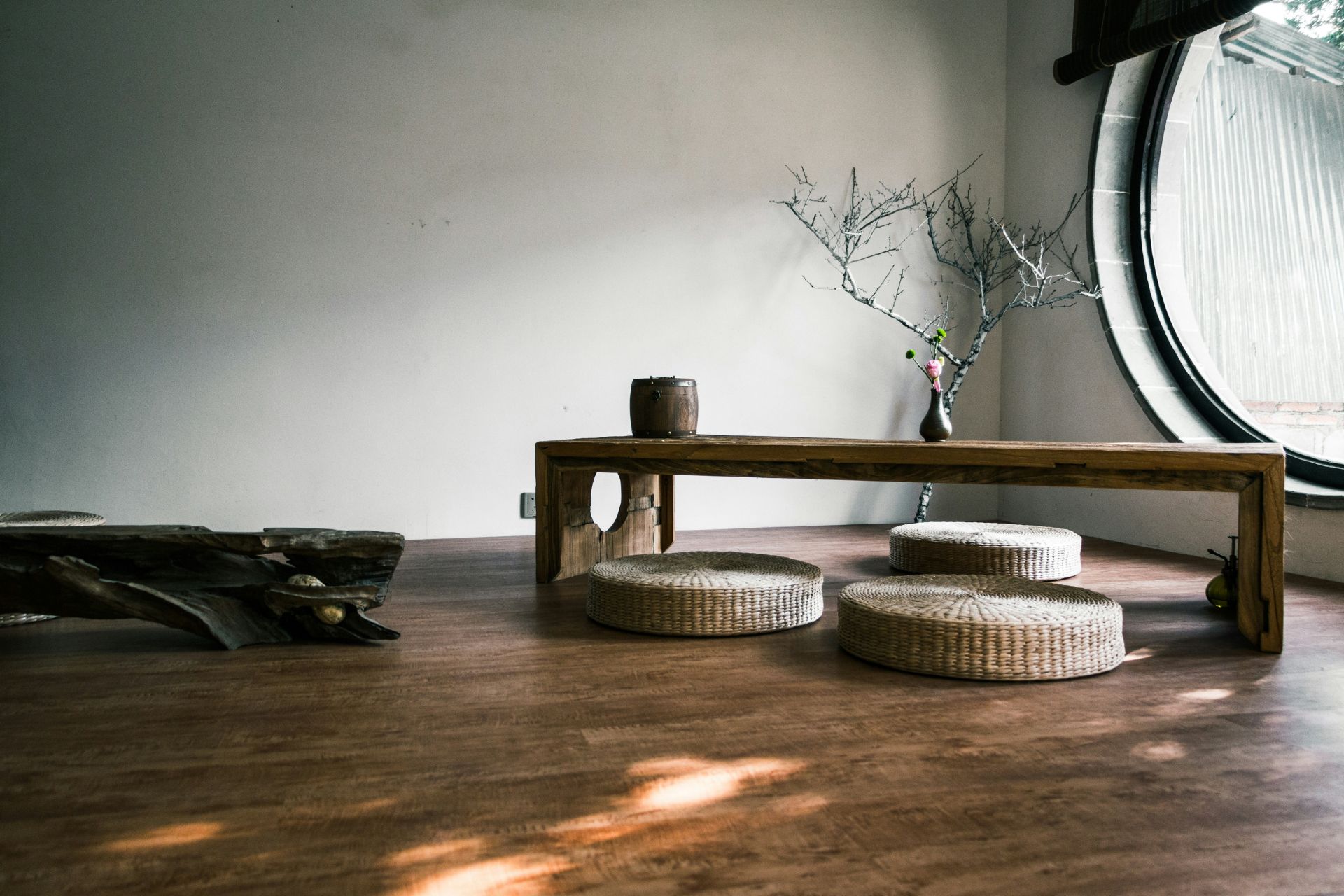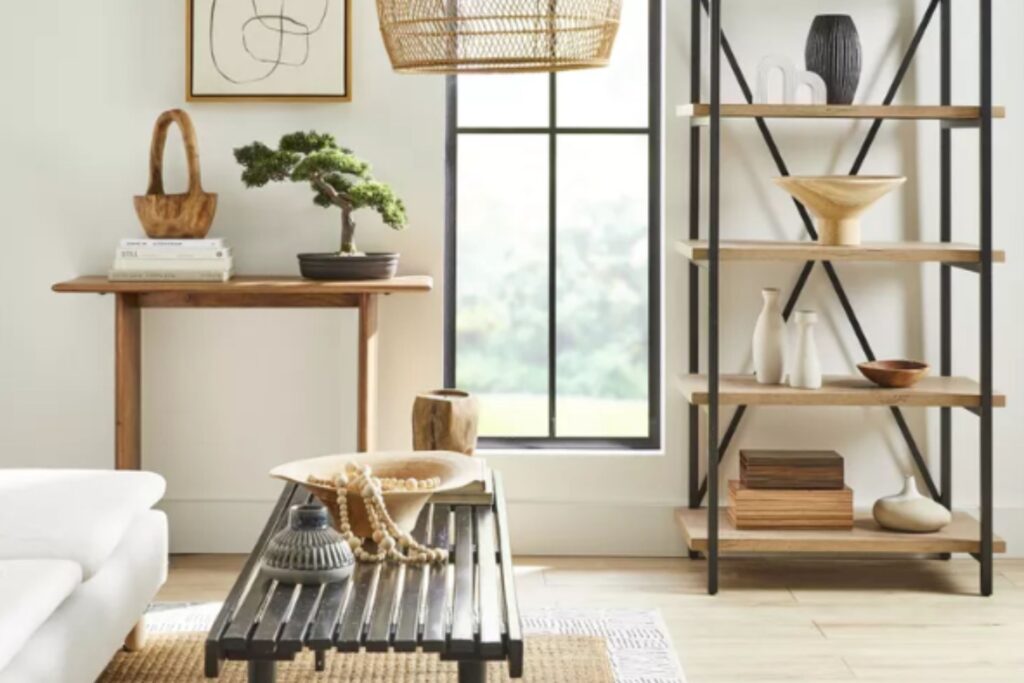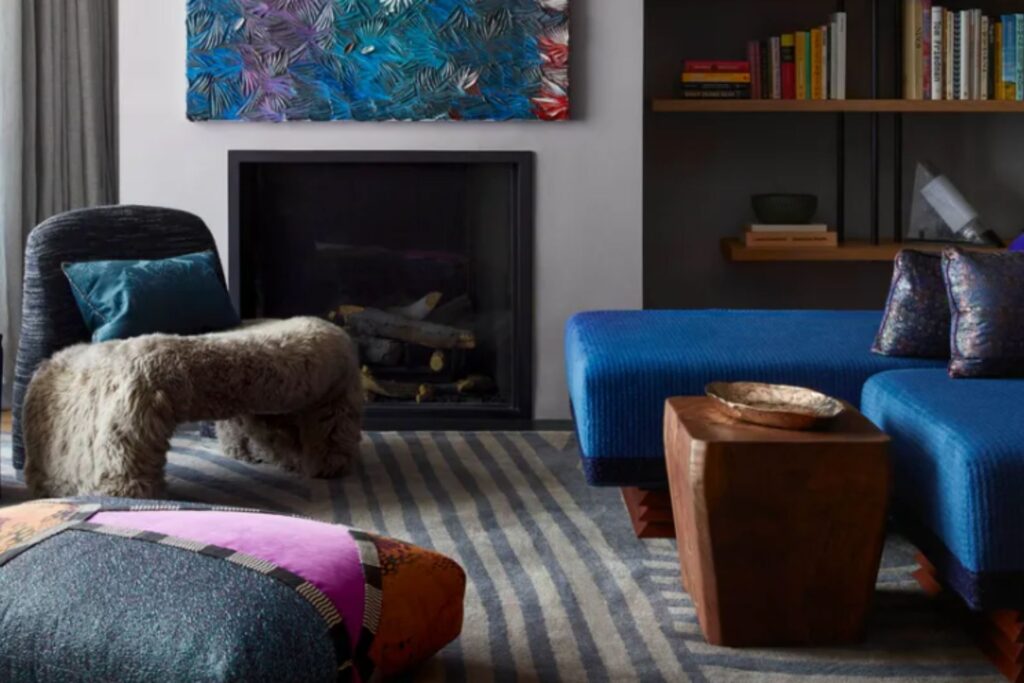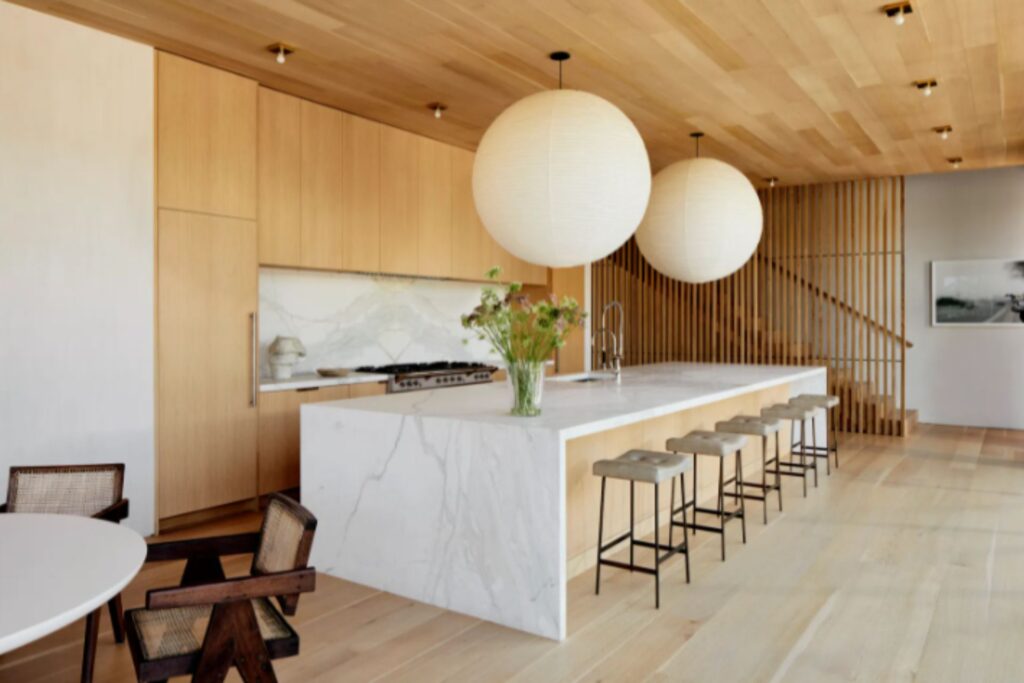How the Japandi Interior Design Trend Creates Calm and Stylish Spaces

We are reader-supported. When you buy through links on our site, we may earn an affiliate commission.
Have you ever walked into a room and instantly felt peace wash over you? That’s the magic of Japandi, a design philosophy that can create a tranquil yet trendy sanctuary in your home. Japandi is an interior design style that mixes the minimalism of Japan with the warmth of Scandinavia, and yes, it’s as delightful as it sounds. Yet, this style is so popular because it transforms your living space. If you peel back the layers of Japandi design, you can understand how it infuses serenity and style into every corner of your home.

Source: https://www.thespruce.com/
What Is Japandi Interior Design?
Japandi interior design is an elegant combination of Japanese and Scandinavian aesthetics, according to London designers from Black & Milk. Its style is renowned for its ability to introduce a serene atmosphere into any living space. Homeowners can create spacious and calm environments, forming a peaceful retreat from the hectic outside world. While it helps maximize the aesthetic appeal of a home, it also enhances livability. As such, it makes a popular choice for those seeking functionality and tranquility in their interiors.
Japandi Interior Design Features
Understanding what Japandi design features it incorporates can help you master the look in your own home.
Embraces Minimalism
One of the defining features of Japandi is its minimalistic characteristics. The style strips away unnecessary clutter and focuses on what is essential, creating a clean, functional space.
In a Japandi-style room, designers choose every piece of furniture and decor with care and purpose, often serving multiple functions to maximize the use of space. This minimalist look can make a room appear large and open while creating a sense of calm and order. As a result, it makes it easier to relax and unwind in your home.

Source: https://www.architecturaldigest.com
Neutrals Are Everywhere but Incorporates Color, Too
Japandi often uses neutral colors that exude peacefulness. However, it doesn’t shy away from incorporating colors to add vitality and depth to a room. In a spacious 3,500-square-foot San Francisco home, the Japandi style is on full display with its wide use of neutrals as the foundation. Yet, the strategic splashes of blue furniture and lively wall art give the space character and personal flair.
The use of color in Japandi design is all about balance and intention. Rather than filling a space, it’s about enhancing and complementing the existing calm created in this minimalist setup. The colors create focal points, add interest and reflect the homeowners’ personality without overwhelming the senses.
These principles come to life in this San Francisco home, showing that even in a design style that values restraint, there’s plenty of room for expressive hues that make a house feel like a home.
Materials Are All-Natural
Japandi design uses natural materials that contribute to the style’s grounding in the world. This design philosophy welcomes the raw beauty of organic materials like wood, bamboo, cotton, stone and clay. These components bring an element of the outside world into the home, enhancing the cohesion with nature.
Incorporating natural materials is also a nod to Japanese and Scandinavian cultural values of sustainability and craftsmanship. Wood is often left with a matte finish to showcase its grain, while you’ll also appreciate the texture and durability of stone. Additionally, textiles made from natural fibers add warmth and comfort.
Subtle Contrasts
Rather than stark oppositions, Japandi employs a mix where contrasts are soft yet impactful. You can often achieve this by balancing tones, textures and materials. Homeowners witness this through the interplay between smooth stone surfaces against the coarse weave of a natural fiber rug or the pairing of dark, rich wood tones with lighter, sandy hues.
The subtlety of contrasts adds depth and interest to a Japandi space without disturbing its peaceful essence. For example, some homes follow this principle by juxtaposing sleek, clean lines with organic, imperfect textures. While contrast is present, it’s never jarring, always maintaining the elegance inherent in Japandi interior design.
Clean Lines
Japandi interiors appreciate the beauty of clean lines and spaces. This style leans on sleek, streamlined furniture and architectural elements that lend a sense of calmness. The open spaces allow each piece of furniture to make a statement yet still contribute to the overall cohesion of the room.

Source: https://www.vogue.com/
How To Mirror the Japandi Style in Your Home
Decorating your home with the Japandi look is easy when you follow three simple steps.
1. Incorporate a Neutral Palette With Color Accents
Begin your Japandi transformation by starting with a neutral color base. Think shades of white, beige and pale wood to give you a serene backdrop that soothes the eye. Then, introduce color sparingly to infuse warmth and personality.
Consider a statement piece, like a muted indigo throw or a rust-colored cushion, as these can stand out against the neutrals. These pops of color should feel intentional and curated, never overwhelming. This will help you maintain that minimal style while adding depth and coziness to your space.
2. Blend Natural Materials for Authenticity
The next step is to integrate natural materials into your space. Wood — in its raw and unpolished form — should be a focal point, whether through furniture, accent pieces or architectural elements. Add textiles like linen or handwoven cotton for a touch of softness and to introduce texture.
When selecting decor, choose items made from ceramics, stone or glass that reflect nature. Each material should create a calm atmosphere. By choosing quality over quantity, you’ll ensure each piece looks good and withstands the test of time.
3. Create Harmony
Finally, to truly capture the essence of Japandi, you should prioritize clean lines and maintain clutter-free spaces. Furniture should have a simple, geometric silhouette with decor that follows suit.
Storage solutions are key in a Japandi home — they should blend seamlessly with the room’s design while hiding away the chaos of daily life. Strive for a balance between open space and furnishings to let the room breathe. To achieve this, you may need to declutter and only keep what brings functionality or joy. This disciplined method results in pleasing looks and promotes a mindful style of living.
Achieve Serenity With Japandi Interior Design
When adopting Japandi interior design, the process can be as rewarding as the finishing touches. Start small, curate with intention, and allow the less-is-more philosophy to guide you. Japandi is more than a style — it’s a way of living that brings mindfulness to your surroundings. Let your space evolve naturally and create a home where you feel peace in every line and texture.










